A wooden deck provides a charming and functional extension of your living space, offering a place for relaxation and outdoor gatherings. However, when mold takes root on the wood surface, it not only compromises the deck’s aesthetic appeal but can also pose potential health hazards. Learning how to remove mold from a wood deck is crucial for maintaining its structural integrity and ensuring a safe environment.
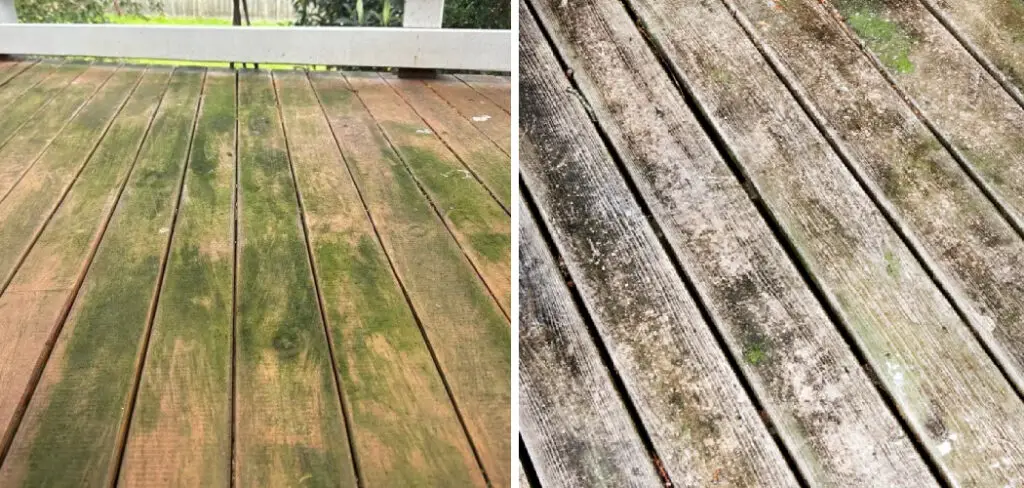
In this comprehensive guide, we’ll explore how to remove mold from wood deck. From natural solutions to commercial cleaners, we’ll provide step-by-step instructions to help you restore your wooden deck to its pristine condition, ensuring a clean and inviting outdoor space for your family and guests. Say goodbye to mold-related worries as we delve into practical strategies for rejuvenating your wooden deck and preserving its beauty for years to come.
Importance of Maintaining a Clean and Mold-Free Wood Deck
Maintaining a clean and mold-free wood deck is essential for its longevity and the safety of those who use it. Mold and mildew can grow on any surface, but they are particularly common on wood decks due to their exposure to moisture and organic matter such as fallen leaves, twigs, and other debris. While mold may seem like an aesthetic issue, it can actually cause significant damage to your deck if left untreated.
Mold and mildew are types of fungi that thrive in damp and humid environments. They can penetrate the wood fibers, causing discoloration, weakening of the structure, and even rotting. This not only affects the appearance of your deck but also compromises its structural integrity, potentially leading to safety hazards for anyone using it.
Moreover, mold and mildew can also trigger allergies and respiratory problems, making it even more crucial to keep your wood deck clean and free of these harmful organisms.
Regular maintenance is key to preventing the growth of mold and mildew on your wood deck. This includes keeping the surface clean by removing debris and leaves regularly, as well as treating any stains immediately. It is also important to ensure proper drainage and ventilation to prevent moisture from accumulating.
In addition, annual deep cleaning and inspection of your wood deck is recommended. This includes using a pressure washer with a mild detergent solution to remove any dirt or debris that may be embedded in the wood fibers. It is important to note that excessive pressure can damage the wood, so it is best to hire a professional if you are not familiar with using a pressure washer.
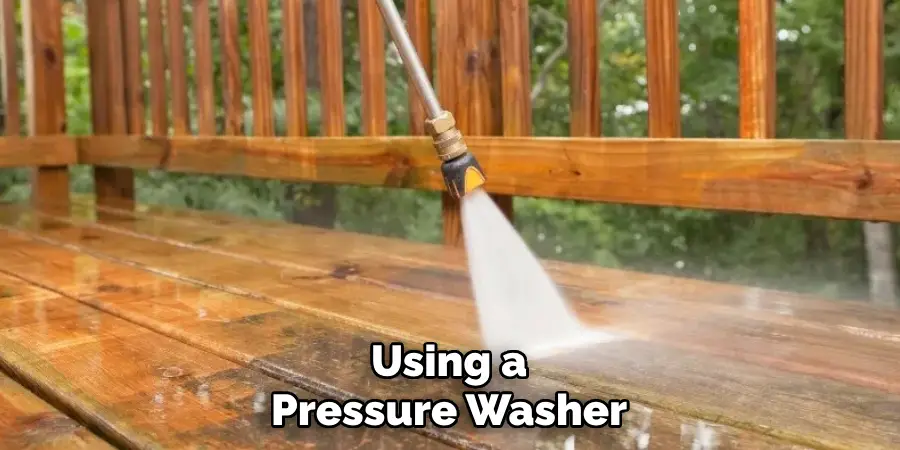
10 Methods How to Remove Mold from Wood Deck
1. Use a Mixture of Vinegar and Water
One effective method for removing mold from wood decks is to use a mixture of vinegar and water. Simply mix equal parts white vinegar and water in a spray bottle and spray it onto the affected areas. Let it sit for about an hour before scrubbing with a stiff brush and rinsing off with water.
2. Apply Baking Soda
Baking soda is another natural solution for removing mold from wood decks. Mix one cup of baking soda with one gallon of water and apply it to the affected areas using a scrub brush or sponge. Let it sit for 15-20 minutes before rinsing off with water.
3. Use Hydrogen Peroxide
Hydrogen peroxide is a powerful disinfectant that can effectively remove mold from wood decks. Mix equal parts hydrogen peroxide and water in a spray bottle and spray it onto the affected areas. Let it sit for 10-15 minutes before scrubbing with a brush and rinsing off.
4. Try Bleach
For tougher mold stains, bleach can be used as an effective solution. Mix one part bleach with four parts water in a bucket and apply it to the affected areas using a brush or sponge. Let it sit for 10-15 minutes before rinsing off thoroughly.
5. Utilize Pressure Washing
Pressure washing is another option for removing mold from wood decks, especially if the mold has deeply penetrated into the wood fibers. Use a pressure washer on low power setting to avoid damaging the wood, and make sure to wear protective gear while handling chemicals.
6. Scrub with Detergent
A mild detergent mixed with warm water can also be used to remove mold from wood decks. Scrub the affected areas with the mixture using a stiff brush, then rinse off thoroughly with clean water.
7. Use Commercial Mold Remover
There are also many commercial products available specifically designed for removing mold from wood surfaces such as decks. Follow the instructions on the product carefully and make sure to wear protective gear while using it.
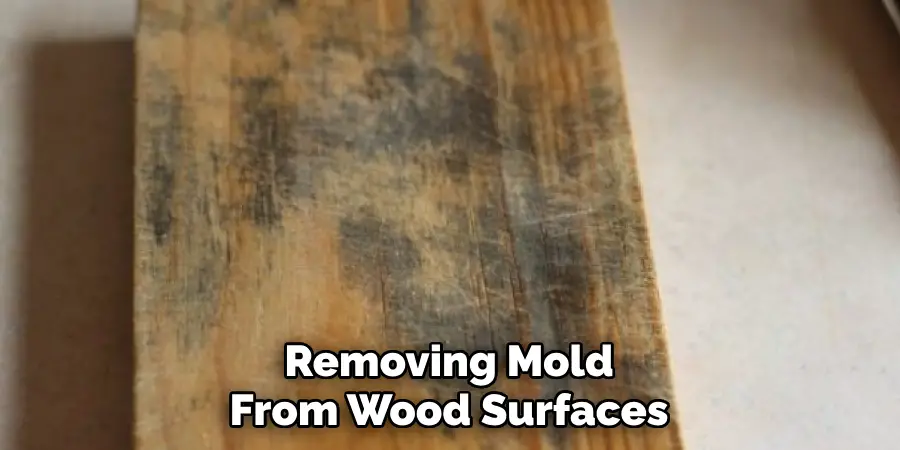
8. Prevent Future Mold Growth
To prevent mold from growing on your wood deck in the future, make sure to regularly clean and maintain it. Keep the deck dry and well-ventilated, and consider applying a sealant or stain to protect against moisture.
9. Use Natural Sunlight
Sunlight is a natural mold killer, so exposing your wood deck to direct sunlight can help prevent and remove mold growth. Make sure to move any furniture or objects that may be blocking sunlight from reaching all areas of the deck.
10. Seek Professional Help
If you have a severe mold problem on your wood deck, it may be best to seek professional help. Professional cleaners have access to specialized equipment and products that can effectively remove mold without damaging the wood.
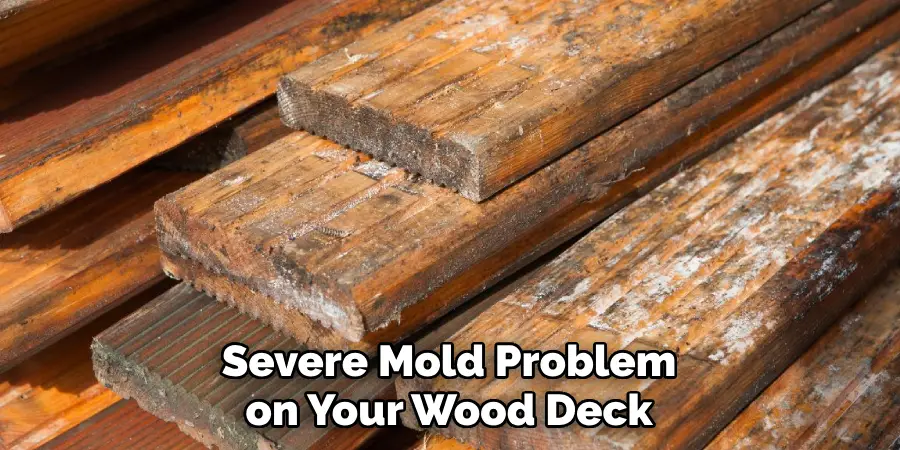
Choosing the Right Cleaning Agents for Wood Decks
One of the most common problems that homeowners face is mold growth on their wood decks. Not only does it make the deck look unappealing, but it can also compromise the structural integrity of the wood if left unchecked.
To effectively remove mold from your wood deck, you need to choose the right cleaning agents that will not harm the wood or surrounding vegetation. In this section, we will discuss the different types of cleaning agents and their pros and cons.
Bleach
Bleach is a popular choice for removing mold from wood decks due to its affordability and availability. It works by killing the mold spores on contact, making it an effective solution for surface-level mold growth. However, bleach can also damage the wood fibers, causing discoloration and weakening the wood over time.
Oxygen Bleach
Oxygen bleach, also known as sodium percarbonate, is a safer alternative to chlorine bleach. It works by releasing oxygen molecules that break down mold and other organic matter without damaging the wood fibers. It is also safe for plants and the environment, making it a more eco-friendly option.
Vinegar
Vinegar is another natural cleaning agent that can be used to remove mold from wood decks. It has antimicrobial properties that make it effective in killing mold spores on contact. However, like bleach, vinegar can also damage the wood fibers and may not be as effective on deep-rooted mold growth.
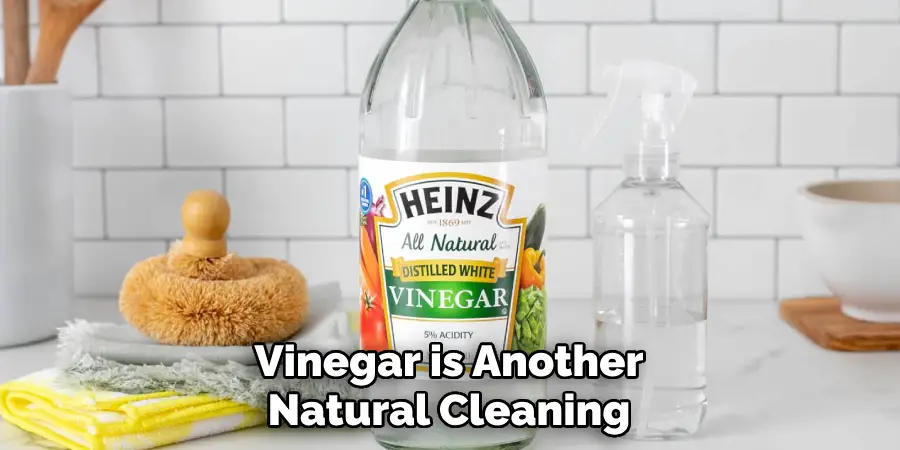
Commercial Mold and Mildew Cleaners
There are many commercial cleaners specifically designed to remove mold and mildew from wood decks. These cleaners often contain a combination of bleach, oxygen bleach, or other active ingredients that effectively kill mold spores without damaging the wood. However, they can be more expensive than DIY options and may still contain harsh chemicals that can harm plants and the environment.
Manual Scrubbing Vs. Power Washing
It’s a common dilemma when it comes to removing mold from wood decks – should you manually scrub the affected areas or use a power washer? Both methods have their pros and cons, and the decision ultimately depends on the severity of the mold infestation and personal preference.
Manual Scrubbing
Manual scrubbing involves using a brush, water, and cleaning solution to physically scrub away mold from the wood surface. This method is effective for smaller, localized areas of mold growth and can be more precise in targeting specific spots.
It also allows for a more controlled application of cleaning solutions, which can be important for delicate or sensitive wood surfaces. However, manual scrubbing can be time-consuming and physically demanding, especially if the affected area is large. It may also require multiple applications and elbow grease to completely remove all traces of mold.
Power Washing
Power washing, on the other hand, involves using a high-pressure water stream to blast away mold from the wood surface. This method is best suited for larger areas of mold growth or heavily infested decks. It can cover a large area in a shorter amount of time and requires less physical labor. However, power washing can also be too harsh for delicate wood surfaces and may cause damage if not done properly. It also poses a risk of spreading mold spores to other areas if not done carefully.
Things to Consider When Removing Mold from Wood Deck
1. Identify the Type of Mold
Not all molds are created equal. Some are harmless while others can be toxic and dangerous to your health. Before removing mold from your wood deck, it is important to identify what type of mold is present. This will help determine the proper course of action and necessary safety precautions to take.
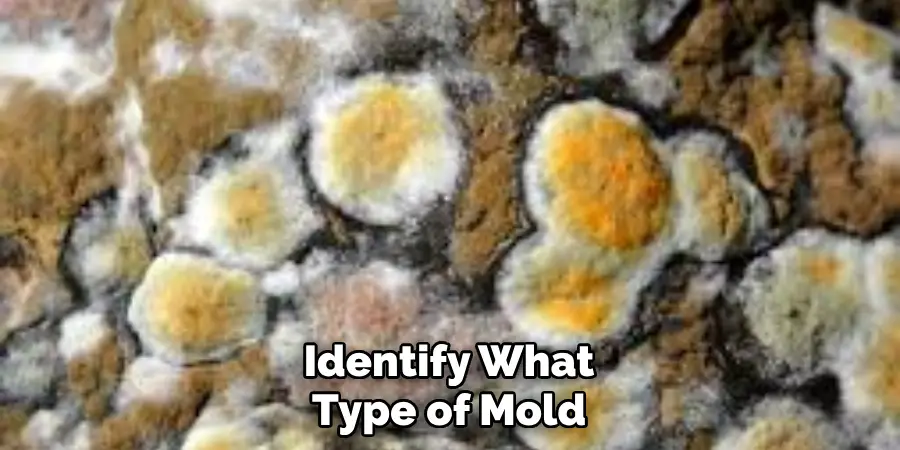
2. Assess the Extent of the Mold Infestation
The size and extent of the mold growth on your wood deck is also an important factor to consider. If it is just a small patch, you may be able to remove it yourself with simple cleaning methods. However, if the mold growth covers a large area, it may be best to seek professional help in order to ensure proper and thorough removal.
3. Check for Underlying Issues
Mold growth on a wood deck is often a sign of underlying issues such as water leaks, poor drainage, or lack of ventilation. Before removing mold from your wood deck, be sure to check for any underlying issues that may have caused the mold growth. Fixing these issues will prevent future mold growth and ensure a longer lifespan for your deck.
Common Mistakes to Avoid When Removing Mold from Wood
Not Wearing Protective Gear
Mold spores can be harmful if inhaled or if they come into contact with your skin. Therefore, it is important to wear protective gear such as gloves, a mask, and goggles when removing mold from wood. This will not only protect you from potential health hazards, but it will also prevent the spread of mold spores to other areas.

Using Bleach
Many people believe that bleach is an effective way to remove mold from wood. However, bleach is only effective on non-porous surfaces and can actually damage the wood fibers, making it more susceptible to mold growth in the future. It is best to use specialized cleaners specifically designed for removing mold from wood.
Not Properly Drying the Wood
After removing the mold from wood, it is important to properly dry the surface. Leaving the wood damp or wet can create an ideal environment for mold to grow back. Use a fan, dehumidifier or natural sunlight to thoroughly dry the wood before sealing or painting it.
Not Addressing the Source of Moisture
Mold thrives in damp and humid environments, so simply removing the visible mold may not solve the problem entirely. It is important to also address the source of moisture that led to the mold growth. This could be a leaky roof, improper ventilation, or high humidity levels. By addressing the root cause of the problem, you can prevent future mold growth.
Conclusion
In conclusion, knowing how to remove mold from your wood deck is crucial for both the aesthetic and safety of your outdoor space. By following these tips and utilizing natural solutions, you can effectively eliminate mold and prevent it from returning in the future.
Remember to always prioritize safety when working with chemicals and consider hiring a professional if needed.
Don’t let mold ruin your outdoor oasis any longer – take action now and say goodbye to those pesky spores once and for all! With a little bit of effort and the right techniques, you can achieve a clean, refreshed deck that will impress your friends and family. So what are you waiting for? Take the first step towards a mold-free deck today with these tried-and-true methods on how to remove mold from wood deck. Trust us, your future self (and nose) will thank you!
About
Outdoor Fixes is a distinguished figure in the world of Diy design, with a decade of expertise creating innovative and sustainable Diy solutions.
His professional focus lies in merging traditional craftsmanship with modern manufacturing techniques,
fostering designs that are both practical and environmentally conscious. As the author of diy,
outdoorfixes delves into the art and science of outdoorfixes-making, inspiring artisans and industry professionals alike.
Education RMIT University
(Melbourne, Australia) Associate Degree in Design (Outdoor Fixes) Focus on sustainable design, industry-driven projects,
and practical craftsmanship. Gained hands-on experience with traditional and digital manufacturing tools, such as CAD and CNC software.
Nottingham Trent University
(United Kingdom) Bachelor’s in outdoorfixes.com and Product Design (Honors) Specialized in product design with a focus on blending creativity with production
techniques. Participated in industry projects, working with companies like John Lewis and Vitsoe to gain real-world insights.
Publications and Impact
In diy, Outdoor Fixes his insights on indoor design processes, materials, and strategies for efficient production.
His writing bridges the gap between artisan knowledge and modern industry needs, making it a must-read for both budding designers and seasoned professionals.

